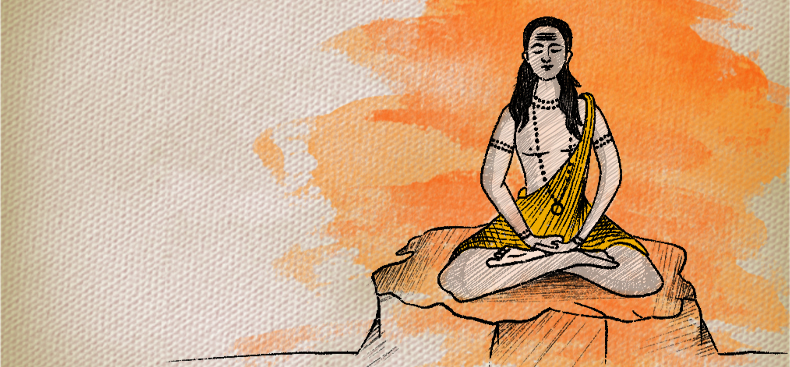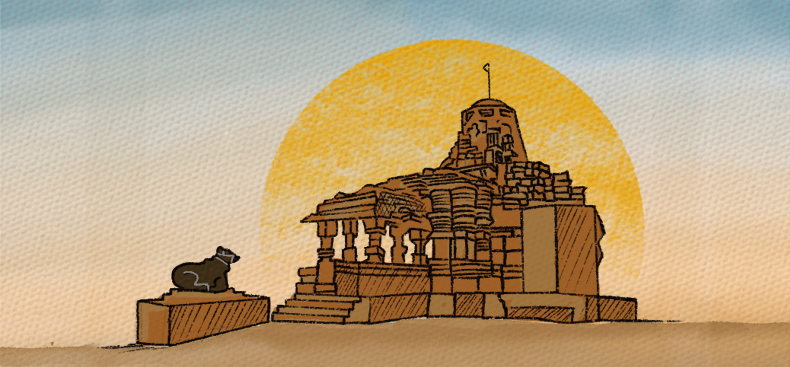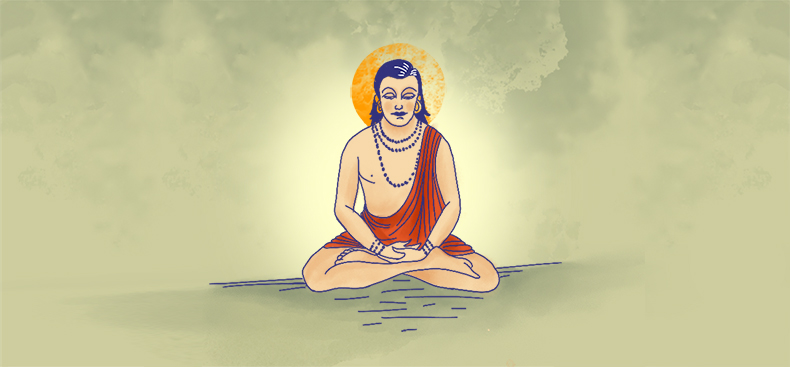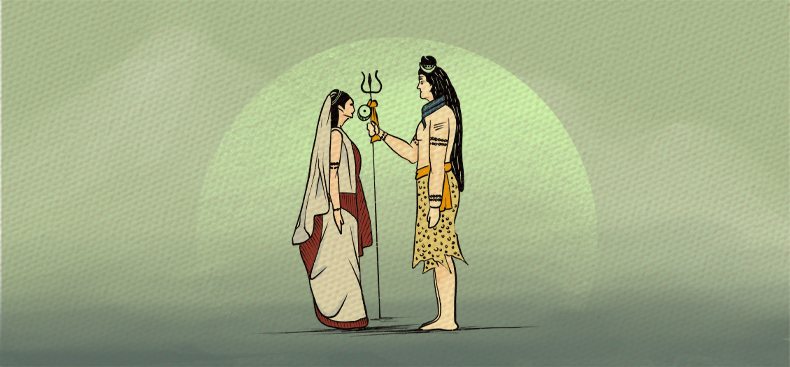To attain mastery over the bindu, Amṛtasiddhi recommends three yogic techniques: Mahāmudrā, Māhābandhā and Mahāvedhā. These yogic practices involve advance control of prāṇa through the use of certain yogic mudrās. Through mastery over the movement of the subtle breath, the yogi leads the prāṇa into the central channel of the subtle body. This upward rising breath along the central channel pierces all the three knots – Brahma, Viṣṇu and Rudra – and the life-breath reaches the very summit of the subtle body. Once this happens, the yogi has reversed the process of the downward flow of bindu. This state is called jīvanmuktī, liberation in life, a state equivalent to Lord Śiva himself!
The Amṛtasiddhi concept of bindu retention appears in other Haṭha Yoga texts, including the famous Haṭhayogapradīpika. As the practices of Haṭha yoga became more advanced, these simple practices paved the way for more advanced āsana and prāṇayāma practices, as can be seen from the Haṭha Yoga texts produced from the 15th to 18th century. One thing to note is that Amṛtasiddhi does not talk about Kuṇḍalinī or chakra. This Kuṇḍalinī or chakra form of yoga emerged from the Tantra tradition of Śaivism rather than the other forms of Hindu asceticism.
The Buddhist Origins of this Text: Few Issues
Recently there has been much academic research in western academia on Amṛtasiddhi and early yoga texts. One prominent academic has claimed that Amṛtasiddhi is a Buddhist-Vajrayāna text because, a. there are many words in the texts of Buddhist provenance, b. there is a sloka in the text that criticizes other Buddhists for following the Vajrayāna form of yoga, and c. the later manuscripts of the texts remove some of these Buddhist words.3James Mallinson, The Amṛtasiddhi: Haṭhayoga’s Tantric Buddhist Source Text (draft July 3, 2016) Alexis Sanderson’s Festschrift.
However, there is an acute problem with this thesis of Buddhist origin which I can only briefly touch upon here. First, the cosmology of Amṛtasiddhi—Mount Meru with seven continents and fourteen planes—is exclusively non-Buddhist. Buddhism already had a well-developed cosmology, so if the authors were Buddhist, it is inconceivable that they would use Hindu cosmology to describe their practice. Second, the yogic body with its central channel, whose name is māhāvidyā and is guarded by the Hindu Trinity, is purely a Śaiva-Śakta concept. The term māhāvidyā for the Goddess does not appear in any Buddhist text.
Third, the goal of Amṛtasiddhi is to achieve Jīvanmukti, a state equal to that of Lord Śiva. It is unthinkable that the goal of a Buddhist tantric would be to become Śiva. Fourth, Amṛtasiddhi mentions five elements existing in the universe, while in Buddhism, there are only four elements.4In the text there is a mention of four elements but in a very specific context of the elements which can be separated. Obviously only four elements can be separated because space as the fourth element cannot be separated. So, this cannot be used as an example of the Buddhist metaphysics of four elements. Fifth, the entire text is filled with exclusive Śaiva terminologies such as utkrānti (yogic suicide), pūnya tīrtha (holy pilgrimage), aiśvarya (splendour), vibhuḥ (eminent), niṣkalo (formless) and many others.
Sixth, the author of Amṛtasiddhi says that even Buddha has to practice the teaching of the text to attain jīvanmukti, failing which Buddha will remain unperfected and in the trap of the samsāric cycle of birth and death. By definition, such a statement cannot come from the pen of a Buddhist author. Nowhere in the vast Buddhist literature has Buddha ever been called an unperfected or a worldly man. Seventh, Buddhism in Maharashtra went into a terminal decline from the 7th century onwards and by the end of the 10th century it was non-existent in Maharashtra, except for few isolated caves in Kanheri and its environs. It will take a leap of faith to imagine that a Buddhist text suddenly appeared in Maharashtra in the 11th-12th century, when the entire Maharashtrian polity overwhelmingly favoured the ascetic Śaiva groups, who acted as Rājagurus for various kingdoms of the region, including the Yādavas and the Śilhārās.
There are multiple other points that makes the Buddhist origins of this text untenable, but that would require an entire academic paper. Suffice to say that the conceptual elements of Amṛtasiddhi already have precedence in earlier Śaiva tantra such as the placement of the winds in different regions of the body, and there is continuity of such practices post-Amṛtasiddhi. Additionally, all the Buddhist terms are non-structural to the text and can be replaced without losing any of the teachings of Amṛtasiddhi, but remove the Śaiva features and there is no Amṛtasiddhi.
Therefore if this is a Buddhist text, with a Śaiva soteriology, cosmology and physiology, then we are in an uncharted territory of textual classification, and a lot of ancient Indian texts would need to be reclassified. We would also have to assume that in the 11th century Maharashtra, there existed an ultra-secretive highly advance group of Buddhist yogis who disappeared without leaving any material trace of their existence except for this singular piece of work, Amṛtasiddhi, ironically a text on how to attain immortality. I hope independent minded yoga scholars will come forward to relook at this important early yoga text.
PS: This article was slightly edited on 19th June, 2023, to take into account new research on the early yoga traditions. Readers are advised to refer to chapter 5 of Vijay Sarde’s recently published work, the Archeology of Nātha Sampradāya in Western India, 12th-15th Century, to know more about the early history of haṭha yoga.





Leave a Reply